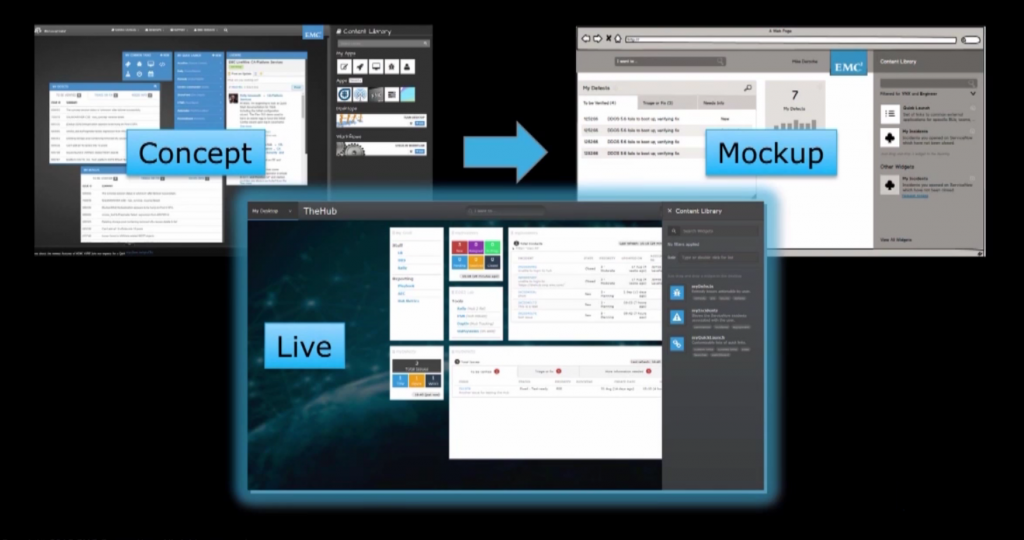As the “low code” platform market explodes, many non-technical employees of today’s organizations are able to build enterprise-class applications by assembling pre-built components using simple, drag and drop capabilities.
This “citizen developer” movement, however, is only a part of the low code story. In fact, the platforms in this market fall on a spectrum from true “no code” environments suitable for non-technical users on the one hand, to platforms that help bona fide developers accelerate and simplify the creation and deployment of applications that require custom coding.
In fact, one way to tell how broadly capable a low code platform actually is would be to put it in the hands of a seasoned development team. For such professionals, the goal isn’t to build applications without code. Instead, they are looking to simplify those aspects of the development lifecycle that tend to slow developers down, thus accelerating the development process while improving quality overall.
EMC’s TheHub on OutSystems Platform
Look no further than enterprise software vendor EMC for such a development team. EMC now has more than 12,000 engineers in 86 countries working on dozens of applications, many now a part of the EMC product line via its 75 acquisitions over the last decade.
I spoke with Ed Jones, VP of Engineering Operations at EMC. Jones runs 376 engineering labs around the world, many of them using different tools. His challenge: building TheHub, an easy to use portal that would facilitate EMC’s open contribution model across all of its labs.
Ed’s team considered assigning their own engineers to build TheHub from scratch, and also looked at purchasing a solution from various vendors. However, no one vendor fit the bill, as they wanted to knit together tools from different companies, rather than favoring a particular one – a process they referred to as hubification, as shown in the diagram below.

“Hubification” of different tool sets across different business units (Source: EMC)
The team first built a prototype of TheHub. Management approved it, so they spent the next few months evaluating different technology options. As EMC had already been working with the OutSystems low-code platform, it included the Platform in the assessment, and selected it for its ability to support EMC’s open contribution model.
EMC partnered with OutSystems on the development effort. The vendor brought in architects and designers up front, and then provided a Scrum team consisting of a ScrumMaster and four developers from OutSystems, and EMC assigned several developers as well.
This Scrum team quickly put together a mockup. Only three months later, it went live with the first version of TheHub. These three phases are shown in the diagram below.

TheHub from Concept to Delivery (Source: EMC)
Furthermore, people in various roles adapted quickly to OutSystems. System administrators as well as DevOps-oriented team members, who leverage tools like Puppet, GitSwarm, ServiceNow, and Nagios, took to OutSystems quickly. The security team took about two weeks to get comfortable with OutSystems.
Now that TheHub is live, EMC is continuing to add additional capabilities to it on an ongoing basis.
TheHub in Depth
TheHub is essentially a Product Delivery Platform (PDP) that provides engineers with frictionless access to a variety of tools. The team architected TheHub with four layers: the portal user interface, various applications, and a virtualization layer on top of physical infrastructure layer.
Because of TheHub’s open contribution model, engineers can make widgets and check them into TheHub quickly. In addition, non-developers, including project managers, testers, and others, can use OutSystems’ drag and drop capabilities to assemble widgets and then check them in by themselves.
TheHub user interface is a modern portal that includes user awareness, widgets, personalization, and a news feed. The widgets include “my defects” for developers to keep track of the defects in the code, a “my incidents” widget that leverages ServiceNow service management behind the scenes, and a “my tasks” widget with a CA Rally back end, among others.
TheHub brings a unified experience to the people who are using it, helping engineers and other members of development teams go faster. EMC publishes style guides and templates for TheHub to maintain consistency across the work of 2,000 to 3,000 engineers per week from around the world.
The Intellyx Take
With the complex collection of diverse tools the global EMC engineering team deals with every day, the company has a significant risk that team members will focus too much on their tools. For this reason, the fundamental goal of TheHub is to get engineers to focus on the products they’re building instead of the tools they’re using.
Building TheHub on OutSystems Platform turned out to be a perfect fit for this requirement. Basic functionality, flexibility, and speed were more important to EMC than a “fancy” portal, according to Jones. “Sometimes you just need a screwdriver to open a paint can,” he explains. “You don’t need a fancy paint can opening tool.”
Could EMC have built TheHub without OutSystems? Certainly. After all, they have enormous bench strength, with all the skills they would even need for such a task. However, this bespoke route didn’t make sense for them, as OutSystems was able to deliver a more flexible product in a fraction of the time a custom solution would have taken. As a result, EMC’s developers can focus on the products they’re building, not their tools.
Copyright © Intellyx LLC. OutSystems is an Intellyx client. At the time of writing, CA Technologies and ServiceNow are also Intellyx clients. None of the other organizations mentioned in this paper are Intellyx clients. Intellyx retains full editorial control over the content of this article.



